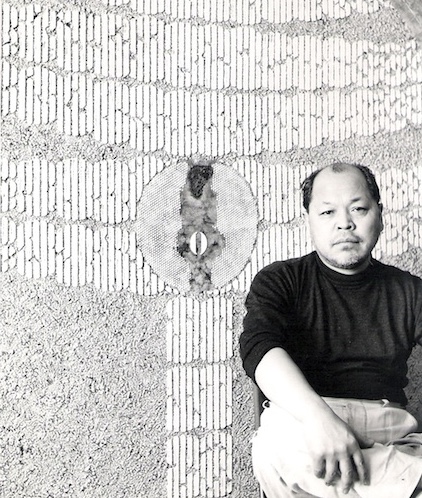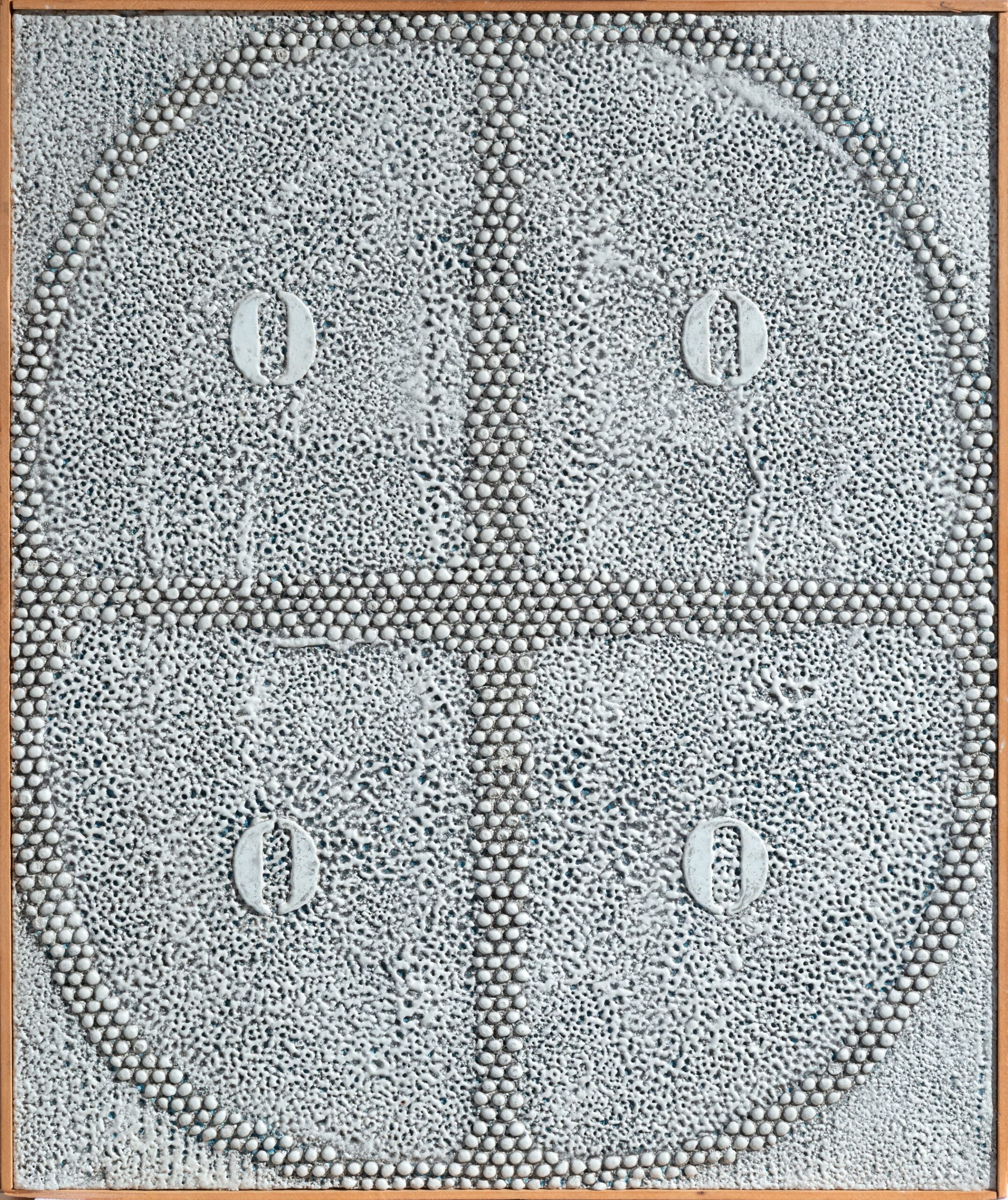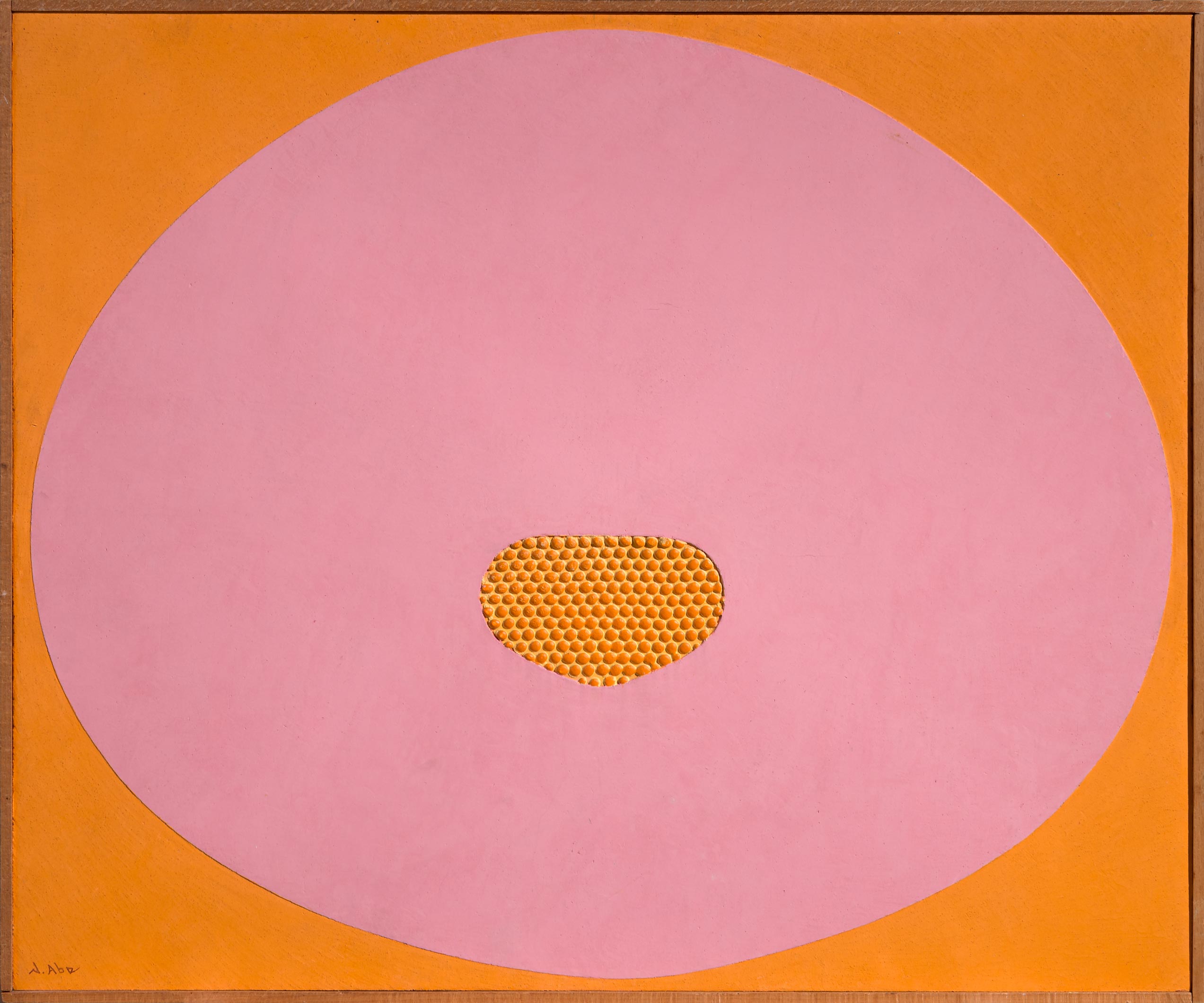The color is light of the spirit that is separated from the rest of the nature.
— Nobuya Abe
The color is light of the spirit that is separated from the rest of the nature.
— Nobuya Abe
Biography
Nobuya Abe (1913–1971) was a Japanese artist known for his abstract art that harmoniously blended Eastern aesthetics with the expressive techniques of Western modernism.
Abe was born in 1913 in Niigata, Japan. He started to paint at young age, after finishing his high school studies. In this period, up until 1940, he participated to his first group exhibitions.
Between 1936 and 1938 he traveled through Mongolia, Korea, Manchuria and North China to study oriental art.
From 1939 to 1942 and again from 1947 to 1953 he exhibited with the group Bijitsu Bunka Kyokai, called also L’Illumination. It was the first surrealist movement in Japan, formed during a period when Japan’s political environment discouraged avant-garde expression. The group provided artists with a supportive space to explore new, unconventional ideas in art. Influenced by European Surrealism, the movement explored deep layers of human psychology and delved into organic abstraction, creating a distinctively Japanese form of Surrealism.
In 1949, Abe became a member of the Executive Committee of the Japanese Artists Association and represented Japan at the 2nd International Art Exhibition in New Delhi.
In 1959, Nobuya Abe made the pivotal decision to settle permanently in Rome, where he remained until his death on May 6, 1971. In the following years, Abe’s works were showcased in several prestigious Italian galleries, solidifying his influence in the European art scene. His time in Italy played a crucial role in building connections between European and Japanese avant-garde movements, such as Spazialismo and the Zero Group.
In 1966, he exhibited in “The New Japanese Painting and Sculpture” at the MoMA of New York, a traveling exhibition that showcased 46 Japanese artists across numerous American museums.
In 1967, he returned to the concept of L’Illumination and assembled a group of six talented artists who shared the belief that the color is light. The group was comprised of non-figurative painters: Abe Nobuya, Mira Brtka, Milena Čubraković, Marcia Hafif, Paolo Patelli and Aldo Schmid. They held their only show at L’Argentario gallery in Trento in June 1967, and dismantled following the sudden death of Abe in 1971, who was the group’s central figure.


